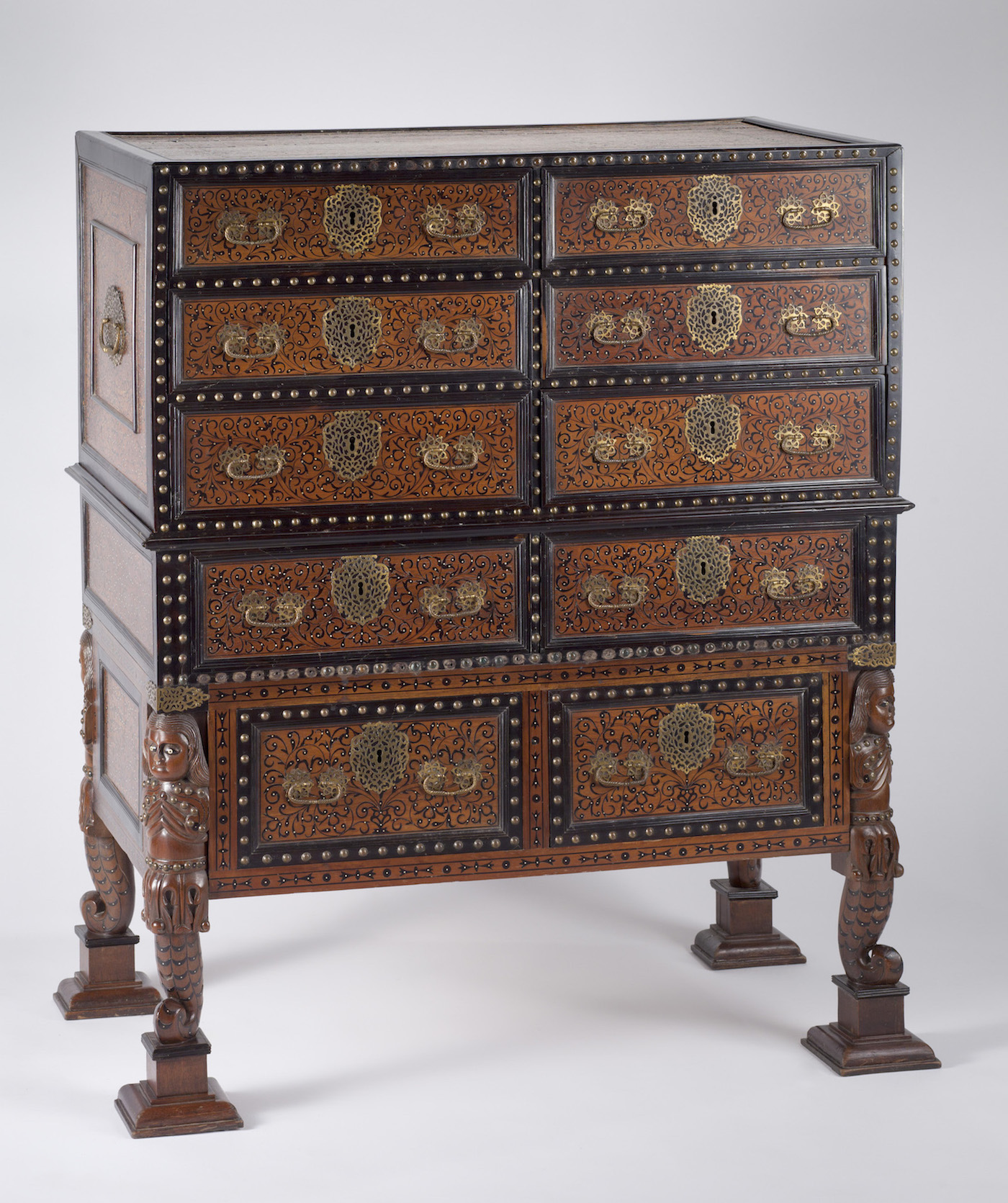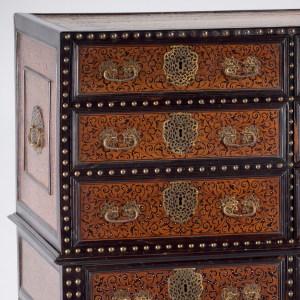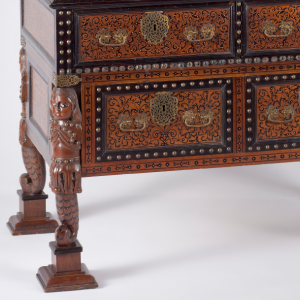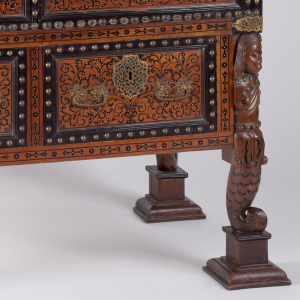Indo-Portuguese Cabinet
Author: Unknown
Origin: Goa, India
Dating: 17th century
Material: Wood (Teak & Ebony), Ivory & Brass
Dimensions (cm): 118,5 x 105,5 x 54,7
Inv. no.: PD0043
A parallelepiped cabinet in teak with ebony and ivory inlays, composed of two parts. The legs are carved with Hindu mythology female figures: the Naga (part man, part sea animal).
These pieces of furniture were meant to store documents or small valuable objects. It was common for cabinets to have secret compartments, disguised as false bottoms or drawers.
The Portuguese presence in India had social, economic, political, religious and artistic effects. Indo-Portuguese art is considered a fusion of different cultural elements. Thus, Indo-Portuguese cabinets were influenced by Portuguese art – the structure with two overlapping parts – and Indian art – seeing the techniques and materials in use.
Cabinets have always been deemed premium objects and would usually be built by order. In these cases, they were made by local craftsmen in Indian Portuguese possessions – Daman, Goa and Cochin – between the 16th and 18th centuries.
The term Indo-Portuguese originated in the late 1870s and, in 1881, John Charles Robinson used it for the first time to catalogue an artistic object in the “Catalogue of the special loan exhibition of Spanish and Portuguese ornamental art ” of the Victoria and Albert Museum (London).








